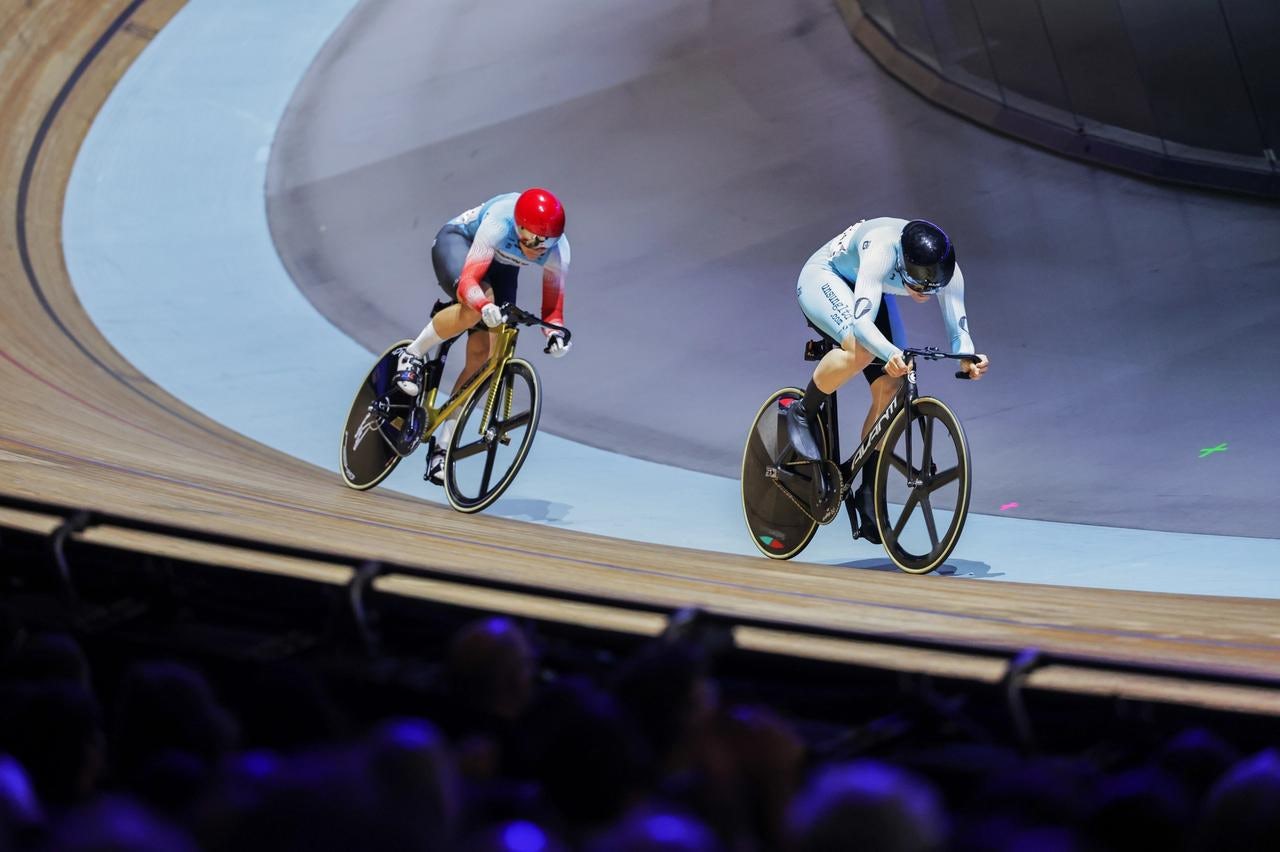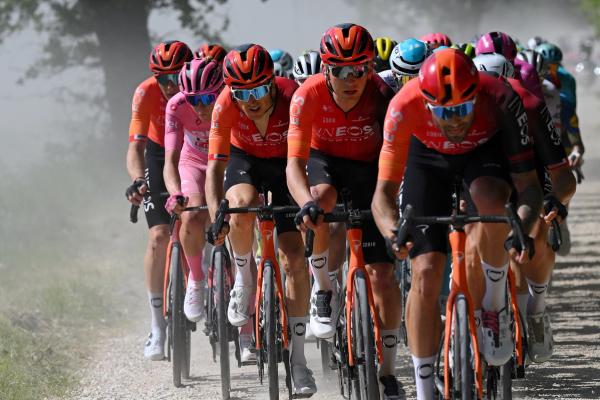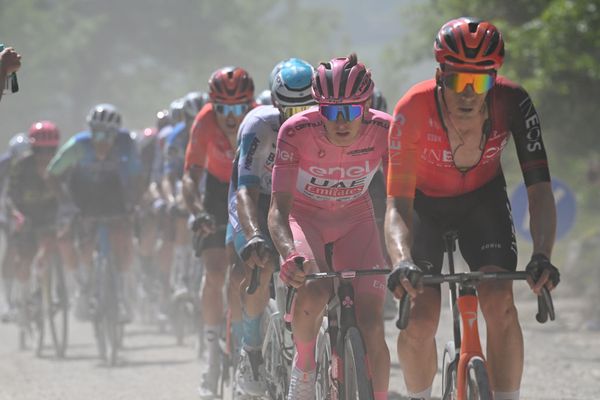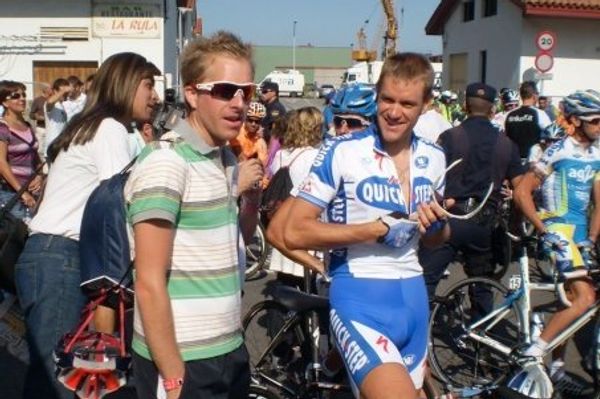Sprinters record huge power numbers at UCI Track Champions League
Precise data from the UCI Track Champions League shows exactly what modern track cyclists are capable of
James Howell-Jones
Junior Writer
© SWPix.com
Ellesse Andrews sprints away from Kelsey Mitchell
At 7pm this evening (Friday 10 November), the first of the final two rounds of the UCI Track Champions League (TCL) gets underway at the Lee Valley Velodrome in London. The riders in the TCL are world-class, but when they’re racing wheel to wheel, it’s sometimes hard to comprehend just how fast they really are.
So, in anticipation of this weekend’s double helping of track action, we’ve got our hands on the power, heart rate and speed data from the best sprinters in the world. Thanks to data provided by AWS, the TCL’s ‘Official Cloud Infrastructure Provider’, we can show exactly how powerful these riders are, and exactly what it takes to cross the finish line in first place.
Read more: UCI Track Champions League: how does it work?
Each rider in the series has a peak power number, which in most cases comes from a test on a static bike. What’s interesting with the real-world track data from the data team at the TCL is the discrepancy between these peak power figures and the numbers riders are actually able to produce during a race.
Some riders, like Canadian sprinter Kelsey Mitchell, are able to meet and even surpass their pre-season power test during a race. Others, like Israeli Keirin specialist Mikhail Yakovlev, struggle to get within 500 watts of their peak power when they’re in a race.
Who is the most powerful male track cyclist at the TCL?
Mikhail Yakovlev - peak power: 2,840W
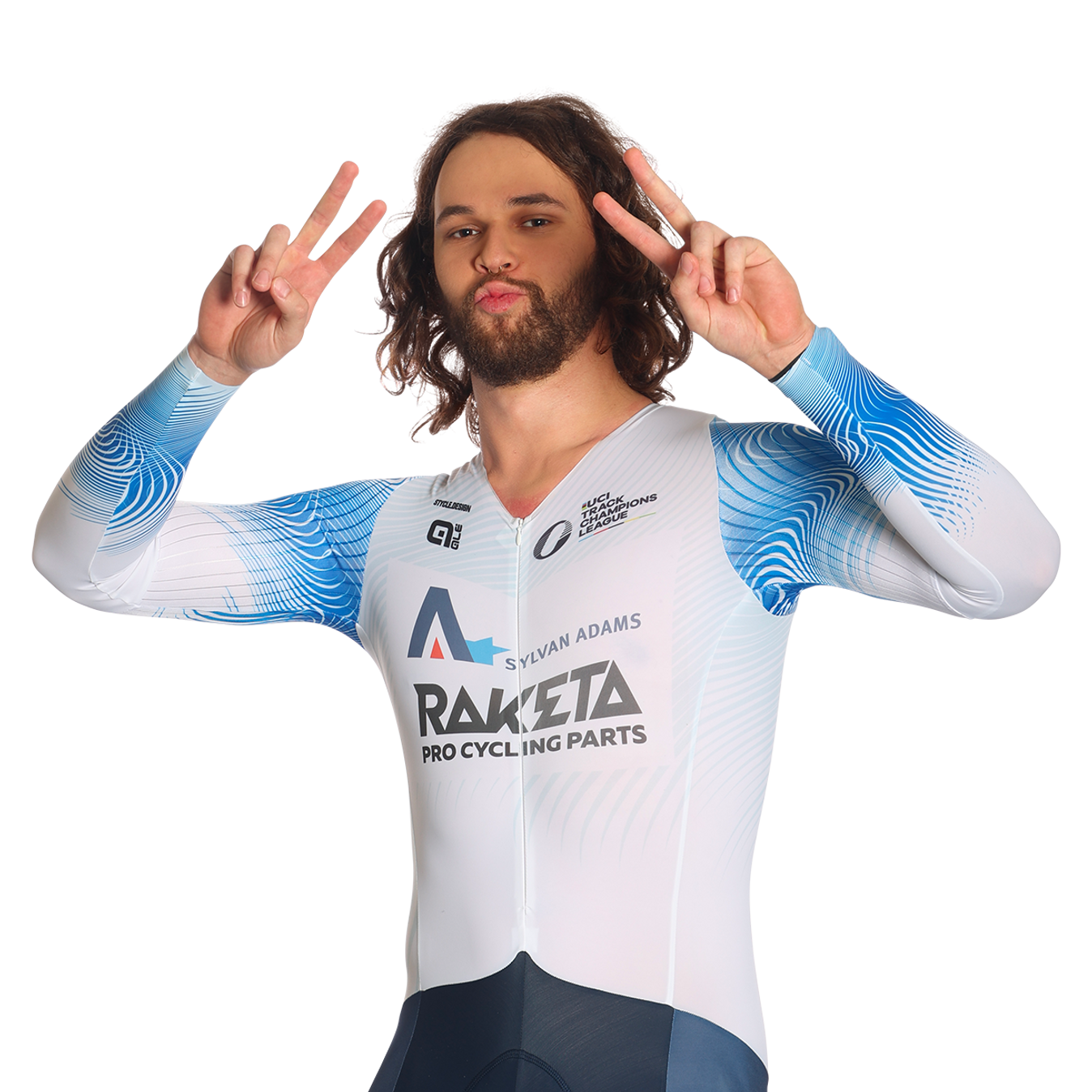
© SWPix.com
Mikhail Yakovlev
Although Olympic champion Harrie Lavreysen is at the top of the sprint leaderboard, he is not the most powerful according to the numbers. That accolade goes to Russian-born Israeli rider Mikhail Yakovlev, who has recorded a peak power of 2,840W. For comparison, AWS say Lavreysen’s peak power is 2,680W, while recent Kilo record breaker Jeffrey Hoogland’s peak power is 2,700W.
But Yakovlev is 10th in the overall standings – why hasn’t his power allowed him to romp home to victory?
First of all, sprinters find their peak power with a fitness test on a static bike. It’s almost impossible to hit those kinds of figures on the velodrome on a real bike, in a real race.
For example, in the sprint last week in Saint-Quentin-en-Yvelines, Yakovlev peaked at 2,077W. The week before in Berlin, he hit 2,021W. In the Keirin final in Berlin, he hit 2,156W, the highest power AWS have seen in the Keirin event, but even so, it’s significantly lower than his peak power.
Then, there’s Yakovlev’s size. He is the tallest and heaviest rider in the field, towering above the rest at 199cm and 106kg. His weight will put him at a disadvantage during accelerations, and his size means he is less aerodynamic than his smaller competitors, especially given the high speeds of velodrome racing – at this level, the riders cross the line at around 75kph.
Finally, there’s the tactical side of things. Yakovlev has a seriously powerful kick, but in that record-breaking Keirin final in Berlin, he sits on the front of the group, taking the brunt of the air resistance. As a result, he fades with about a lap to go, letting other riders pass.
Who is the most powerful female track cyclist at the TCL?
Miglė Lendel - peak power: 1,730W
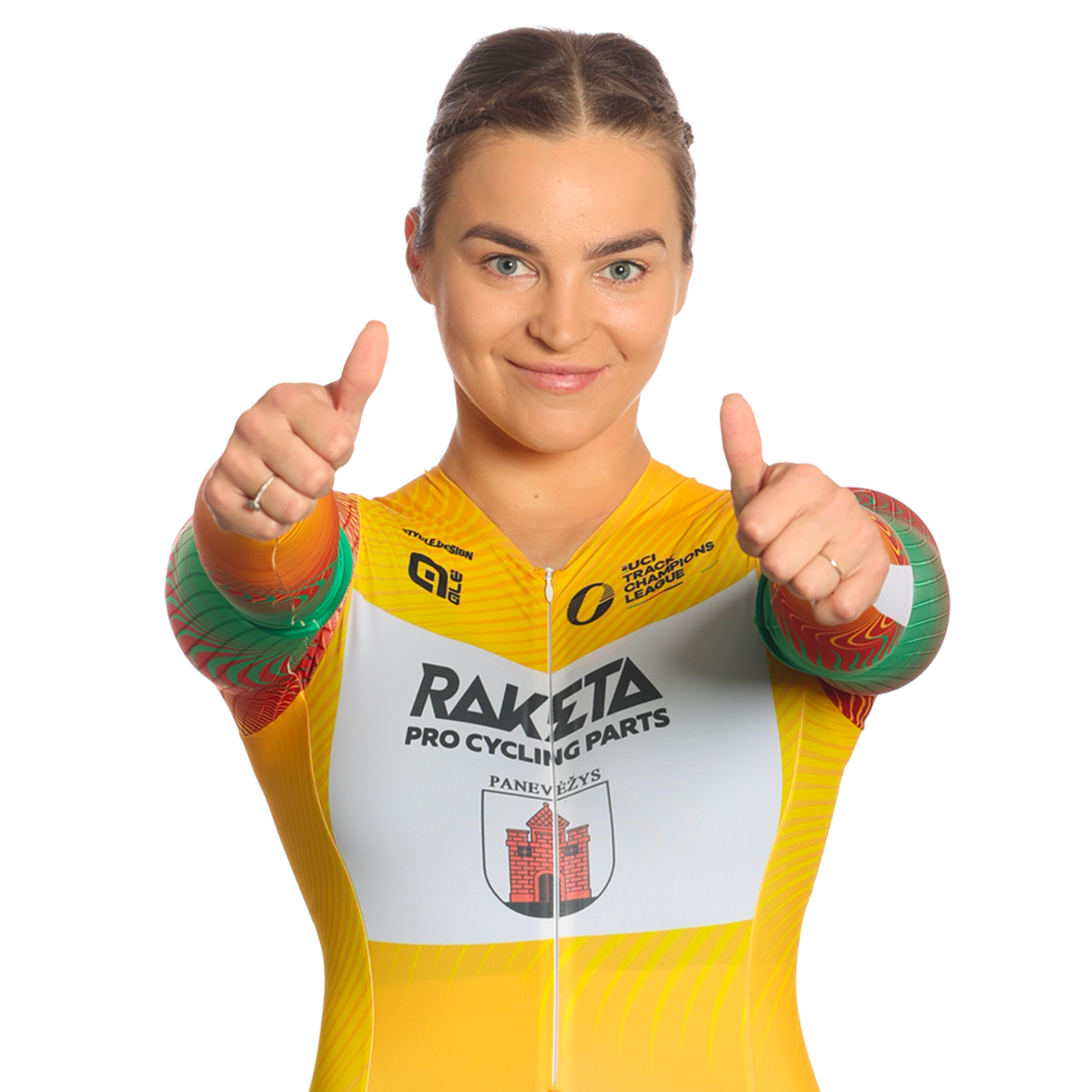
© SWPix.com
Miglė Lendel
Despite being the most powerful rider in the field, Lithuania’s Miglė Lendel is not top of the sprint leaderboard. She is currently 13th of the 18-rider field. As with Yakovlev, it's because her height and power to weight ratio leaves her lacking compared to the other riders, and arguably, because her race craft is not on the same level as some other riders. Lendel is 167cm and 71kg, meaning that although she might have the highest peak power, she isn’t in the top five when we look at watts per kilo.
Read more: Katie Archibald reflects on previous Paris disappointments ahead of 2024 Olympics
When we consider the power of the female field compared to their weight, Alla Biletska, the Ukrainian rider comes out on top. Biletska is 65kg, and 164cm tall – her 1,703W peak power gives her a maximum power to weight of 26.2W/kg; enough to leave any of the WorldTour road riders in the dust.
Biletska has had a storied journey to the league, having been uprooted from her homeland by the conflict in Ukraine. The organisers of the TCL have invited Biletska to the series as a ‘wildcard’ competitor, but looking at her power numbers, and watching her on the track, it’s clear that she’s earned her place in the series.
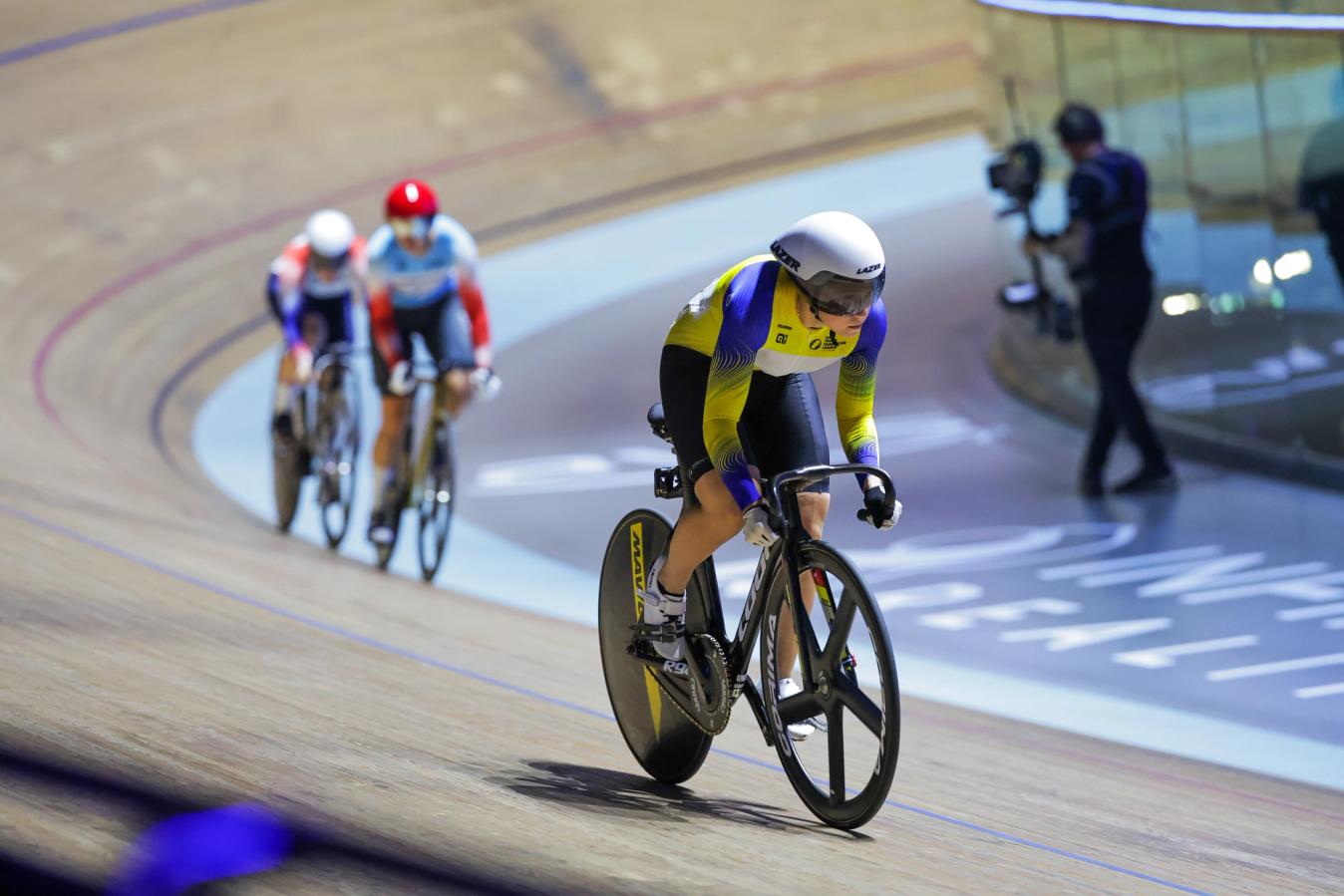
© SWPix.com
Biletska leading a three-way qualifier
The peak power numbers within the women’s field are impressive, but as with the men, few are able to recreate that maximum effort out on the track. The exception to the trend is Olympic champion Kelsey Mitchell, who hit 1,525W – 25 watts more than the potential maximum she declared before the season. At 29 years of age, Mitchell is one of the most experienced racers in the series, and it seems she’s fostered a unique ability to get every ounce of her strength through the pedals, even when she’s in the heat of a race, on a real bike.
What does it take to win the sprint race?
Ellesse Andrews, who sits at the top of the standings, is very nearly the most powerful rider in the field. Andrews can produce 1,706W, just 24W less than Lendel. Interestingly though, Andrews' power to weight ratio is lower than many of the other riders in the series. She is 176cm tall, and weighs 78kg. That means she’s capable of doing 21.9W/kg – a good deal less than some of her competitors.

© SWPix.com
Ellesse Andrews leads in the Saint Quentin en Yvelines sprint final
And yet, Andrews has risen to the top of the sprint leaderboard. Watching her in the previous two finals, both in Saint Quentin-en-Yvelines and Berlin, it’s clear that whilst she is neither the most powerful, nor the most powerful per kilogram, her race craft puts her ahead of the field.
In both instances she commands the race, setting the pace for her competitor in the opening couple of laps. Taking an early lead, she draws her rivals on, keeping them a few metres behind her. They anticipate a late overtake on the final lap, but when the bell rings, Andrew delivers that blast of power. It results in a spurt of acceleration that her competitors, including Olympic champion Kelsey Mitchell, are unable to respond to. By the time they cross the line, these world-class female sprinters are travelling at around 65kph.
Meanwhile, among the men, Harrie Lavreysen has been almost unbeatable at this year’s series of races, conceding only one defeat across the three rounds of racing. Much like Ellesse Andrews, Lavreysen has the second-highest power numbers in the field, with a peak power of 2,680W, and 2,117W measured on the track during racing.
Lavreysen is a good bit smaller than Yakovlev though. He is 181cm tall and weighs 92kg, so that 2,117W on-track peak amounts to just over 23 watts per kilo.
In the last round in Saint Quentin-en-Yvelines, Lavreysen lost his first race of the series, when Matthew Richardson beat him in an incredibly tense sprint final. Unfortunately, Lavreysen’s power meter malfunctioned during that race, but we know that his rival Richardson put out 1,863W. Richardson is just 173cm tall, and weighs just 84kg, giving him a power to weight of 22W/kg in that race. Combined with his smaller, more aerodynamic frame, that was enough to keep ahead of Lavreysen.
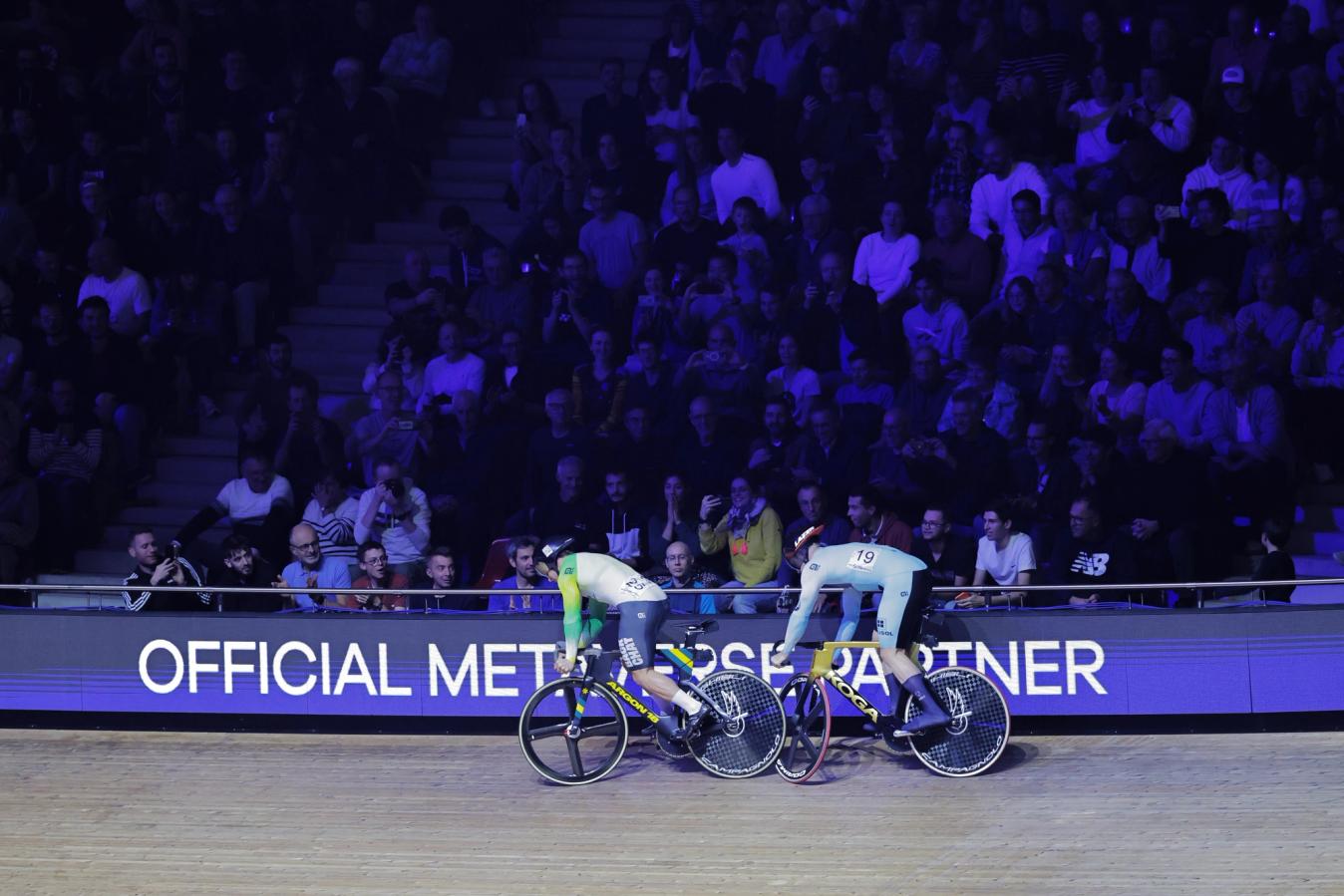
© SWPix.com
Track stands and mind games in the mens sprint final
The pair crossed the line at 74.5kph, but in the most tense moments of the final, the riders were in fact track standing on the side of the track, as if daring each other to try and sprint. Only after two laps of cat and mouse did they finally begin sprinting. It just shows that being a world-class sprinter is about far more than just turning the pedals faster than the other riders.
How do the TCL riders compare to Kilo record-breaker Jeffrey Hoogland?
Since he set the new Kilo record last week, Jeffrey Hoogland has rocketed to the forefront of the track sprinting conversation. Of course, to break the longstanding record, he will have had to put down record-breaking power, but without any published figures, the best any of us can do is make estimations.
Read more: GCN Racing News Show: Did we just witness the most powerful cycling performance ever?
Thankfully, we know exactly how much power Hoogland was capable of last year, when he was participating in the UCI Track Champions League.
During a first round sprint in London last year, Hoogland put down a mind-blowing 2,271W – higher than any of this year’s participants. The same night, say the data team from AWS, he peaked at over 2,000W in all of his races.
Given his larger proportions, though, it still doesn’t seem likely that he could beat his longtime rival Harrie Lavreysen.

Hoogland and Lavreysen battle it out at the 2021 Olympics
The two men have come head to head many times in their careers, most notably in the 2021 Olympics, when Lavreysen beat Hoogland in the sprint, taking gold and leaving Hoogland with silver.
Watch every race from the UCI Track Champions League live on GCN+, with replays and highlights available on demand. Territory restrictions apply, check availability here.
